The new edition of Age of Sigmar is here and we’re doing daily deep dives into the ways the edition’s rules have changed and what those changes mean for players. Today we’ll be looking at how the Hero phase has changed in 3rd edition – discussing the all new Heroic Actions, as well as how spellcasting and praying has changed. In addition, Command Abilities have seen a large scale overhaul in applications and usage, which we will outline below.

The Priority Roll
Much like in 2nd edition, both players must roll off to determine who has priority. In Matched Play, the person who finishes deployment first has Priority in the first round without needing to roll off. In all other situations, a roll off is made, with tiebreaker being decided by who went first in the previous battle round. It’s worth noting here that the Battlepack for matched play contradicts the core rules: Section 4.1 in the core rules specifies that the players roll off and that the player who finished deployment first has the tiebreaker, whereas the special rules section for matched play replaces this priority roll in the first battle round with a simpler system – if you finished deployment first, you have priority.
Ultimately, the system isn’t really different from what you may be used to from second edition. While this might be a disappointment to some, it’s worth noting that a lot of things have changed to address the by-products of the priority roll and downplay their importance. As noted in our list building article, core battalions are gone and now everyone has access to a flexible battalion that allows you to control the number of drops your army is, meaning that players have better tools to control their deployment phase regardless of what faction they have picked. Another big change here is that some command points are distributed at the beginning of the battle round based on who goes first and who goes second:
“After determining who will take which turn, the player who will take the first turn receives 1 command point (see 6.0) and the player who will take the second turn receives 2 command points.” – 4.1.1
This means that at a minimum, players will always have access to at least some command points on their opponent’s turn, helping mitigate against a common feel bad moment in 2nd edition.
Start of Hero Phase
Three things happen at the beginning of *each* Hero Phase (excluding triggered actions as a result of Allegiance Abilities and the like):
- Each player can pick 1 Hero to perform a heroic action
- Each player receives 1 command point if their general is on the battlefield
- Each player can attempt to dispel 1 endless spell with each of their Wizards and Priests, starting with the active player’s attempts first.
What is worth acknowledging here is that the extra command point from your general triggers on your opponent’s turn in addition to yours, meaning that a player who goes second could see up to 4 command points over the course of the battle round:
- 2 from taking the second turn, bestowed at the beginning of the battle round.
- 1 received if general on battlefield in your opponent’s turn
- 1 received if general on battlefield in your turn
This is a *huge* change from 2nd edition, meaning you’re going to see a lot more command abilities being used over the course of the game, which is notable when the list of generic command abilities has been expanded upon significantly, giving players more options (including reactive options) to consider in every phase of the game.
It’s also notable that both players can now attempt to dispel endless spells during each player’s hero phase, but I’ll cover that later.
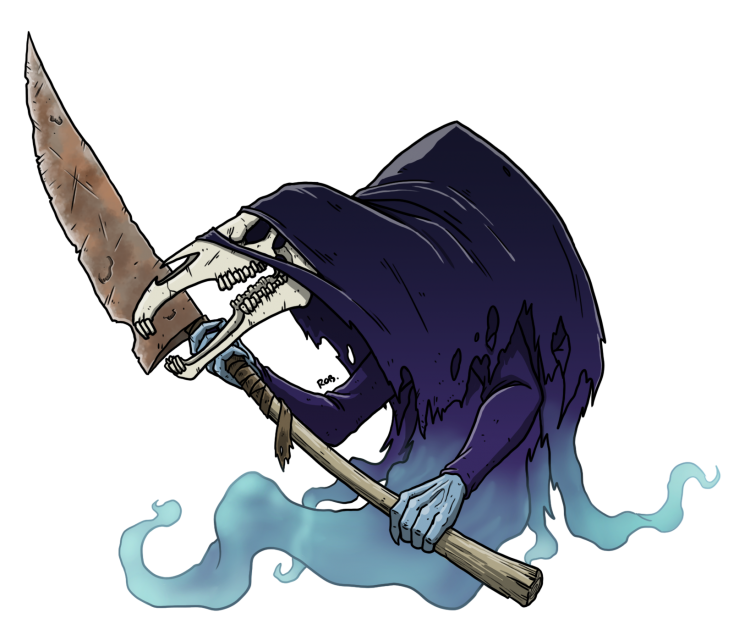
Command Abilities
The way command abilities are used has also fundamentally changed in 3rd edition. Command points do not carry over from battle round to battle round, and are instead lost. This means that it’s important to remember to use them! We foresee a lot of wasted points during every player’s first few games as they get used to the new action economy, so it might be helpful to make yourself some reminders to help.
Whereas previously (with rare exception), only heroes could use command abilities, now the list of eligible models has expanded:
- Unit champions can issue commands to their own unit
- Heroes can issue commands to units that are wholly within 12” of them.
- Generals can issue commands to units that are wholly within 18” of them.
- Totems can issue commands to units that are wholly within 18” of them.
Totems are typically standard bearer units and this is a nice little buff to them as they provide a huge bubble of coverage for command abilities like Inspiring Presence.
What’s perhaps even more impactful for the way the game is played is unit champions being able to issue commands to their own units. Cavalry, deep strikers and skirmishing units get a huge boost here, as for various reasons they are typically isolated and far from the rest of your army, meaning they were more vulnerable to battleshock tests and would lack access to charge rerolls. With this change, they can act as true vanguard elements without needing a hero to babysit them (provided they have a champion).
In addition to who can issue commands changing, the manner in which they can be used has had a rework:
A model cannot issue more than 1 command in the same phase and a unit cannot receive more than 1 command in the same phase. In addition, you cannot use the same command ability more than once in the same phase (even for different units). – 6.1
What does this mean in practice? Command Ability stacking only works if the command abilities themselves are issued in different phases, and you must be careful about who you choose to issue these precious commands to. No longer can you double up on Inspiring Presence in the battleshock phase, or issue All Out Attack to multiple units in the same phase. It looks like a unit can still be affected by multiple command abilities, provided they were issued in different phases (though it’s possible future battletome updates will reduce the number of command abilities that affect a unit for more than one phase).It is worth noting that if an aura command ability is issued, the unit issuing it also receives the command, but it does not prevent other units affected by the aura from issuing or receiving commands. The relevant section from the core rules FAQ:
The other units that benefit from the effect of the command do not count as having received the command (and so are not prevented from receiving a different command in the same phase).
. To help players understand how this impacts common game scenarios you might have seen in 2nd edition, I’ve made some examples:
Example 1:
Mannfred von Carstein issues the command ‘Vigour of Undeath’ in the hero phase, which provides an aura effect of +1 to hit and wound to SBGL units wholly within 12” of Mannfred till the player’s next hero phase.
Mannfred issues the command ‘Rally’ in the Hero Phase to an injured unit of Deathrattle Skeletons next to him, in order to replenish slain models.
Verdict: Illegal – Mannfred cannot issue 2 commands within the same phase. The champion of the deathrattle unit could issue the command to its own unit to make this a legal action.
Example 2:
Mannfred issues the command ‘Vigour of Undeath’ in the Hero Phase, which provides an aura effect of +1 to hit and wound to SBGL units wholly within 12” of Mannfred till the player’s next hero phase.
Mannfred issues the command ‘At the Double’ in the Movement Phase to a unit of Dire Wolves next to him, to move his protective screen into a more advantageous position.
Verdict: Legal – Mannfred has issued 2 commands, but they are in two different phases.
Example 3:
Mannfred issues the command ‘All-Out Defence’ in the Combat Phase to a unit of Fell Bats nearby to boost their save.
A unit of Deathrattle skeletons with their champion alive issues the command ‘All-Out Defence’ to themselves in the Combat Phase in order to boost their save.
Verdict: Illegal – the same command cannot be issued multiple times within the same phase.
The end result of these changes means that it’s now more difficult to stack a number of buffs onto the same unit, unless they were issued to the unit in different phases (with aura command abilities, or commands that apply until your next Hero Phase becoming much more effective as a result).
Rally

This has already been covered by Warhammer Community, but what’s notable here is that it’s usable in both yours and your opponent’s hero phase, thanks to this footnote in the rules:
“When a rule refers to one of your phases (for example, your hero phase), it means that phase in your turn. When a rule refers to the or a phase (for example, the hero phase or a hero phase), it means that phase in either player’s turn.” – Footnote in 4.0
While units are in general going to be smaller in the new edition (due to list construction restricting the number of reinforced units an army can take), the lifespan of these units can really be extended through clever use of retreats and the Rally command. Let’s say you have a unit of 9 Clanrats remaining out of 40 at the bottom of turn 2, and you lose the priority roll and are given second turn. Provided the unit isn’t destroyed you could rally twice and gain back on average 17% of any slain models each time you issue the command.
Heroic Actions
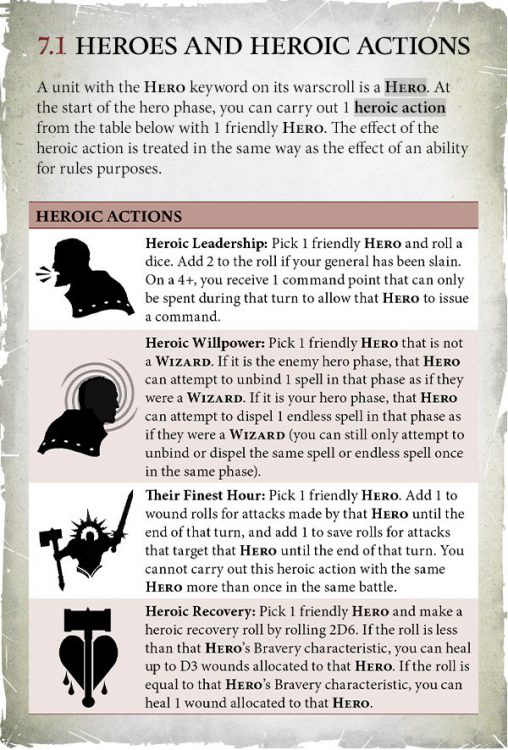
Another new addition to the game first covered by Warhammer Community, these powerful abilities further boost the impact that heroes will have on the game, especially so when these abilities trigger for both players on each of their turns. 2 heroic actions done by 2 players so 4 heroic actions a turn – 20 heroic actions carried out over the course of a game!
While ‘Their Finest Hour’ stands out amongst the crowd, ‘Heroic Recovery’ is also worth noting for how it can help support heroes stay alive throughout the game. You’ll find that often foot heroes will get chipped away at and worn down over the course of the game by your opponent’s ranged units, and ‘Heroic Recovery’ provides a low cost potential heal to keep them topped up.
One other point of note is the order of simultaneous effects – when effects of two or more abilities would be applied at the same time in a turn, the player whose turn is taking place applies the effects of their abilities first. So for the purposes of Heroic Actions, the active player picks their action first, then the inactive player.
Spellcasting
Miscasts are back! An unmodified casting roll of a 2 will cause the spell to fail, deal d3 mortal wounds to the caster and prevent the caster from attempting to cast any more spells in that hero phase. Likely to have the most impact on multicast wizards like Lord Kroak, as sequencing of spells becomes so much more important if a miscast means they have to sit on their hands for the rest of the hero phase.
Unbinding remains the same, with some minor tweaks to wording to specify it as a keyworded unbinding roll, likely for the purposes of rules that interact with it in the future.
Arcane Bolt
Perhaps one of the most surprising changes in the ruleset is the adjustment to Arcane Bolt:
Arcane Bolt is a spell that has a casting value of 5 and a range of 12”. If successfully cast, at the start of any 1 phase before your next hero phase, you can pick 1 enemy unit within range and visible to the caster. That unit suffers 1 mortal wound. If that unit is within 3” of the caster, it suffers D3 mortal wounds instead of 1.
Storing a nuke spell has some interesting applications, and it’s especially interesting for combat casters who can smush it into their opponent’s face for a guaranteed D3 mortal wounds. Nagash or Arkhan in particular gain a big boost from this, as they can charge multiple bolts and smash for a large number of mortal wounds in the combat phase.
Mystic Shield
Mystic Shield is also changed but these changes are much more straightforward. It’s become easier to cast with a CV of 5 (down from 6), and now limited to a unit within 12”. The effect has been upgraded (with an asterix) – it’s now just +1 save to the unit until your next hero phase.
Now obviously this effect is more powerful than just rerolling 1’s from 2nd edition, but the landscape has also changed around the spell. You can only ever modify a save by +1, meaning while it’s a much more accessible source of extra armour, it will no longer stack. It’s also a significant blow to Ethereal units like Nighthaunts or Bel’akor, who no longer benefit at all from the spell.
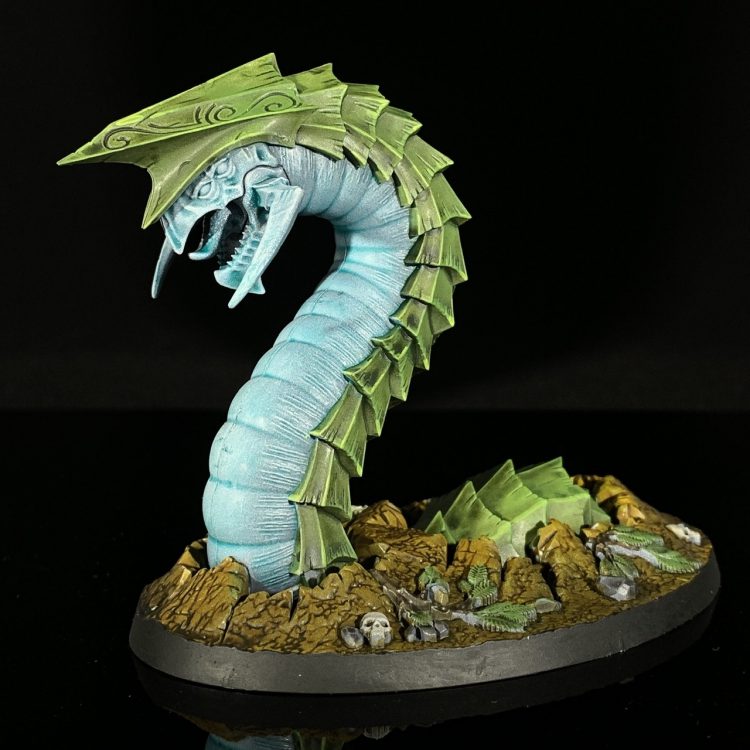
Endless Spells
These have seen a significant revamp in the new edition, having both a greater impact over the course of the game, as well as the introduction of additional ways to interact with them.
As mentioned before, attempting to dispel Endless Spells is now easier than ever before, with every hero having access to a Heroic Action to attempt a dispel, and Priests now also getting the native ability to attempt unbinds as well. As mentioned above, both players may now attempt dispels on both player’s turns – a nice safety net in the event that your opponent manages to double turn you, having cast the Endless Spell at the bottom of their turn, you now get an opportunity to dispel before they can activate it on their following turn.
Predatory Endless Spells
Now move at the end of *each* hero phase, rather than once at the beginning of the battle round. Twice as impactful if left unchecked, we assume we may see (and GW have hinted at) warscroll rewrites to adjust the power level of some of these Endless Spells as a result.
PES (Predatory Endless Spells) now also fall under two categories – controlled and wild, depending on checks that happen at the end of every Hero Phase. Each wizard can select 1 PES that *they* cast that is within 30” of them to control. Each other PES not controlled is considered wild. Then, movement of PES is resolved in the following order:
- All active player’s controlled PES are moved.
- All inactive player’s controlled PES are moved.
- All wild PES are moved, one at a time, alternating between players to select. The active player picks a wild PES first.
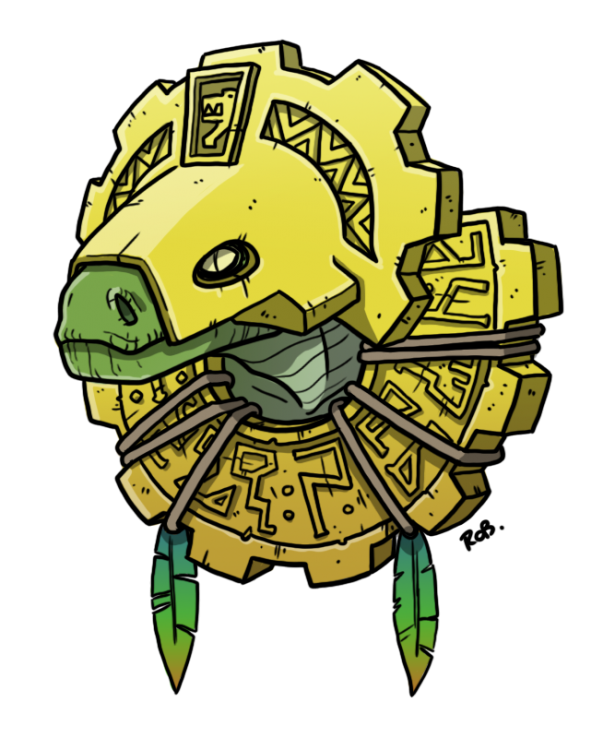
Priests & Prayers
Another significant area of change revolves around Priests, who can now chant 1 prayer that they know in your hero phase. The wording of this is pretty cut and dry, meaning unless an ability specifies otherwise, they can no longer double dip (like Chaos Warshrines did with their Warscroll prayer + Blood Blessings of Khorne).
All priests now know the Bless and Smite prayers, in addition to any Warscroll prayers or Invocations they may have access to. They’ve now tidied up the wording of prayers, which now have an answer value that you must make a chanting roll to have answered. E.g. a prayer with an answer value of 4 would require the priest to make a chanting roll of 4 or more to have answered. If a priest rolls an unmodified 1 for their chanting roll, they suffer divine wrath, automatically failing the prayer and suffering 1 mortal wound.
Bless
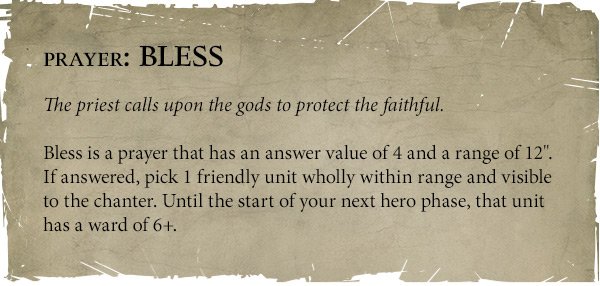
A ward is effectively what the community called ‘feel no pain’ or after save, only given a distinct keyword to make uniform rules tweaks easier. Needless to say, many armies will LOVE access to a universal ward save, including anyone who wants to run new bad boy on the block, Kragnos.
Smite

Finally, a mechanic to represent the war of faith that must wage between holy warriors in Age of Sigmar. 48” range means it’ll almost always be an option in Priest mirror matches, and it presents an interesting decision – do you focus on buffing your own troops, or attempt to wear down your opponent’s to stop them from accessing theirs?
Invocations
A relatively new addition to the rules, their inclusion is now codified in the core rules and expanded upon to increase interactivity. What this means in practice is that they can now be banished.
Unlike dispelling endless spells, only the active player (i.e. the player whose turn it is) may attempt to banish Invocations, and they must give up a prayer in order to attempt a banish. The same player cannot attempt to banish an Invocation more than once per phase. Of note here is that while priests can attempt to dispel Endless Spells, wizards cannot attempt to banish Invocations.
In order to banish, they must pick an Invocation within 48” of the Priest and visible to them and make a banishment roll. If the roll is greater than the answer value of that invocation, it is banished and removed from play. Much like Endless Spells, an invocation may not be summoned again in the turn that it is removed from play.
End of Battle Round
Reached once the battleshock phase has been completed for both players, this is simply a mini phase wherein any special actions associated with the battlepack must be carried out, checks are made to see if the battle ends, and any unspent command points for that battle round are lost.
Have any questions or feedback? Drop us a note in the comments below or email us at contact@goonhammer.com.
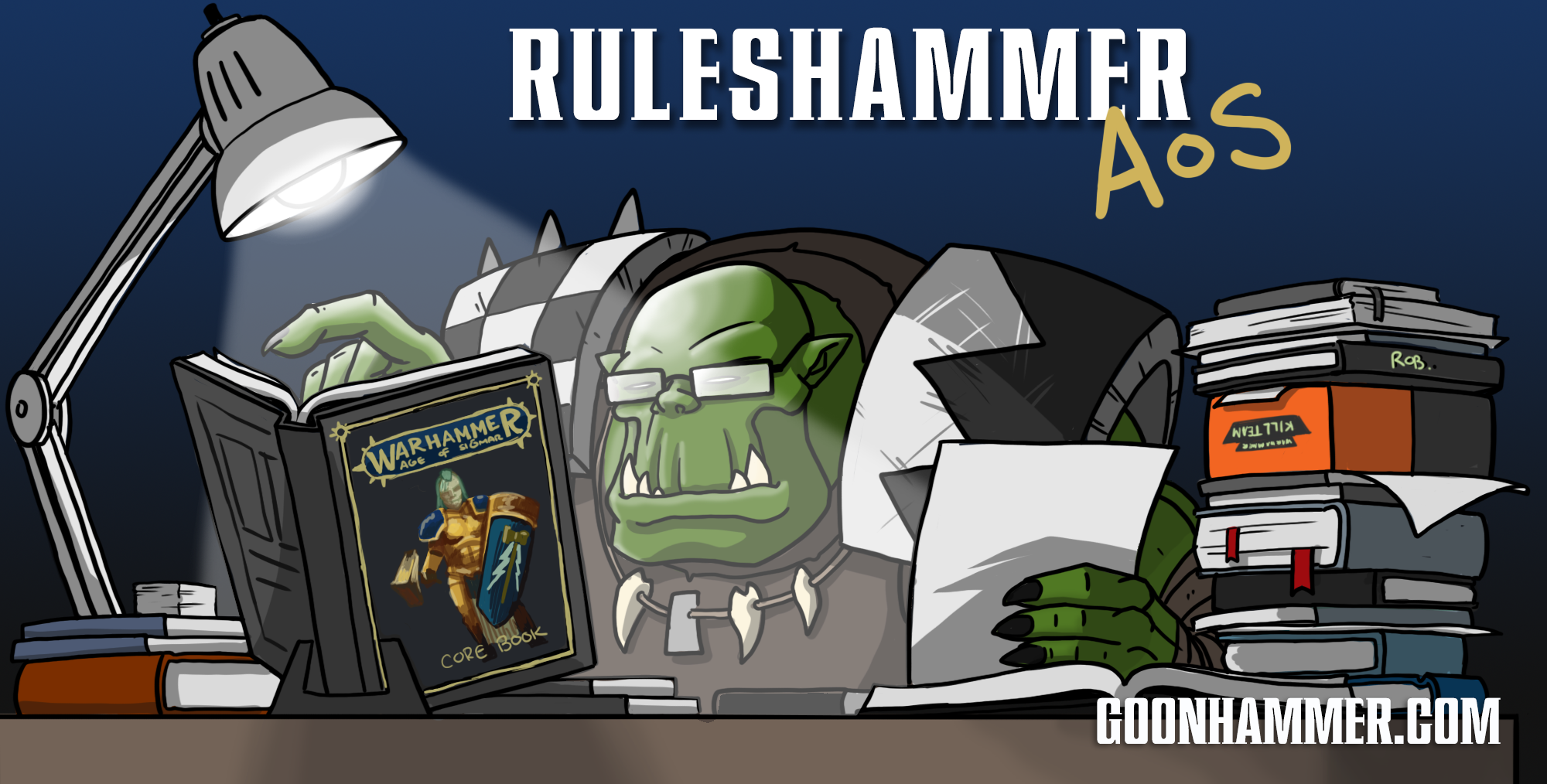
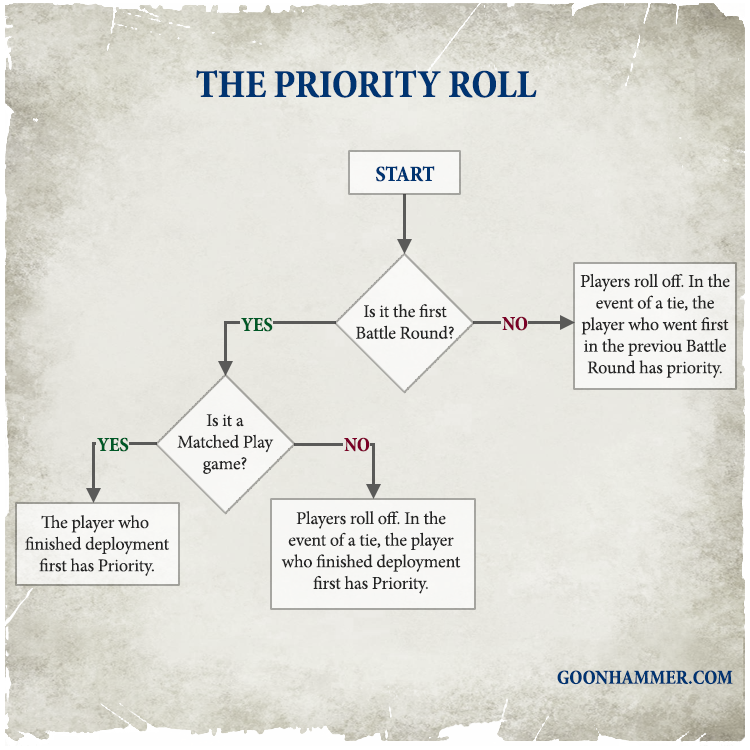


You must be logged in to post a comment.